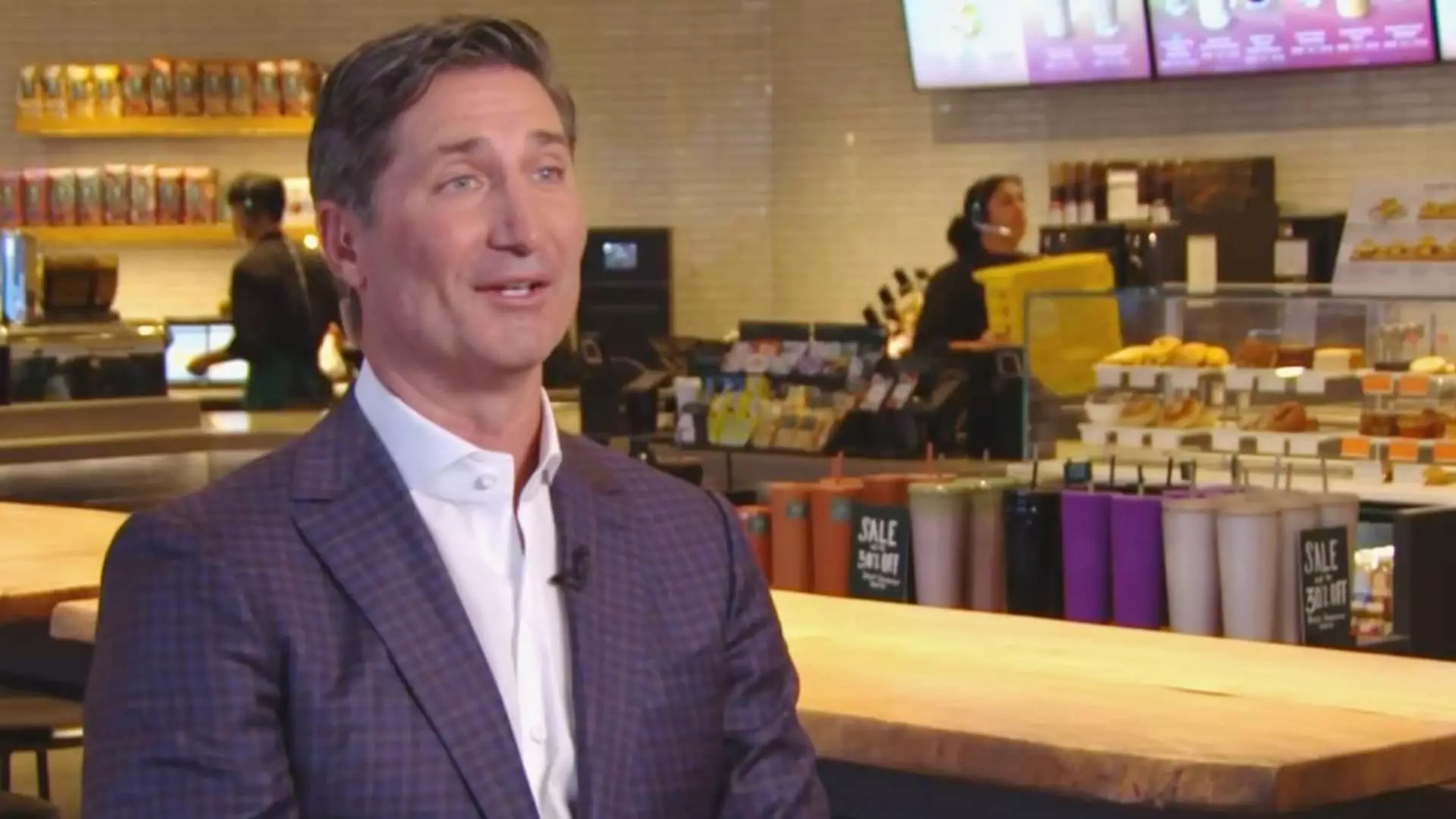Starbucks, the ubiquitous coffeehouse chain, finds itself at a critical juncture as CEO Brian Niccol recently outlined his strategic vision for revitalizing the brand during a quarterly conference call. The company has faced three consecutive quarters of declining sales, prompting a strong need for change. With a mix of pragmatic adjustments to their business model and ambitious long-term goals, Starbucks is attempting to turn the tide in its favor.
Starbucks’ recent sales slump is captured by stark statistics, showing declining revenue throughout twelve months. Niccol stated that nearly half of the company’s transactions in the U.S. currently meet their objective of delivering drinks in under four minutes. However, the realities of operational congestion, especially with mobile orders constituting over 30% of sales, reveal a systemic issue. Addressing this bottleneck is crucial to both customer satisfaction and employee productivity.
Niccol acknowledges that the crowded mobile-ordering counter often creates a frustrating experience for both customers and baristas. As more people rely on their phones to order in advance, the expectation for seamless service has risen dramatically. By recalibrating order management systems and timing mechanisms, Starbucks aims to enhance operational efficiency and reduce wait times. This approach not only boosts customer experience but also alleviates operational strain—both essential for maintaining the brand’s reputation.
In a striking move, Starbucks is revamping its menu under the guiding principle of “fewer, better” offerings. Niccol argues that streamlining the menu will incentivize baristas to produce drinks more effectively and consistently. The large variety can lead to longer preparation times and a less satisfactory customer experience, especially for drinks that are less frequently ordered.
While some loyal customers may be disappointed with a reduced selection, Niccol believes that a focus on quality will resonate with the customer base in the long run. Simplifying the menu will effectively address a major challenge faced by baristas—the need to remember a multitude of complex recipes—and pave the way for swifter service. This strategy embodies a thoughtful approach to operational efficiency and customer experience—a critical duality for any successful food and beverage business.
Starbucks has long marketed itself as a “third place”—a social environment that lays beyond the home and the office. However, recent years have seen the brand stray from this foundational identity, particularly as it has prioritized rapid expansion and operational streamlining. Niccol’s plan aims to re-establish this crucial connection by enhancing the physical and emotional ambiance of Starbucks locations.
The CEO envisions a return to more comfortable seating options, welcoming aesthetics, and a personalized approach, such as serving coffee in ceramic mugs. By revitalizing the cafe environment, Starbucks not only invites customers to linger but also cultivates a sense of community—a vital aspect that contributes to consumer loyalty and repeat business.
In line with these changes, staffing strategies are also evolving. Niccol recognizes the importance of maintaining a well-staffed environment, especially during peak hours and slower “shoulder hours.” With improved scheduling and expanded shifts for baristas, the goal is to create a more reliable workplace, which should ultimately translate to better service for customers.
Further, Niccol intends to reintroduce condiment bars, an element that can ease the interaction between staff and patrons. This seemingly small change can significantly improve the customer experience by allowing individuals to customize their drinks without additional delays. Such operational enhancements demonstrate how thoughtful adjustments can yield customer satisfaction, enhance efficiency, and bolster employee morale.
A significant marketing transformation is also on the horizon as Niccol plans to shift focus from discount-driven strategies to a broader, more quality-centric messaging approach. Discount offers, according to Niccol, have often overburdened staff and diluted the perceived value of the brand. He aims to target a wider audience, shedding light on the quality of coffee Starbucks serves instead of constantly pushing promotions.
This move reflects a deep understanding of branding in the modern retail landscape, as consumers increasingly crave authenticity and quality over bargains. As someone with a rich marketing background, Niccol aims to leverage this experience, emphasizing the premium aspect of Starbucks’ products while simultaneously easing some customer financial burdens through the elimination of extra charges for alternative milk options.
With Niccol at the helm, Starbucks is poised at a transformative moment. By implementing focused strategies that enhance operational efficiency, streamline offerings, create welcoming environments, support staff effectively, and reshape marketing messages, the company aims not only to recover from recent declines but to set a sustainable course for future growth. The heart of Starbucks’ strategy lies in reinforcing its brand identity while simultaneously addressing the evolving preferences of its customers, ensuring that the coffee giant continues to reign in the ever-competitive beverage market.

